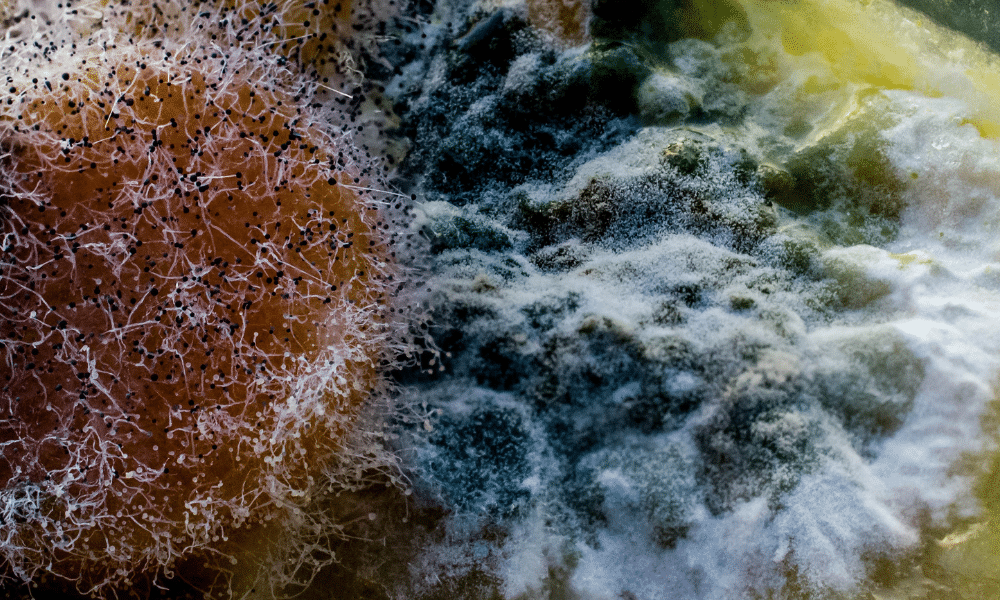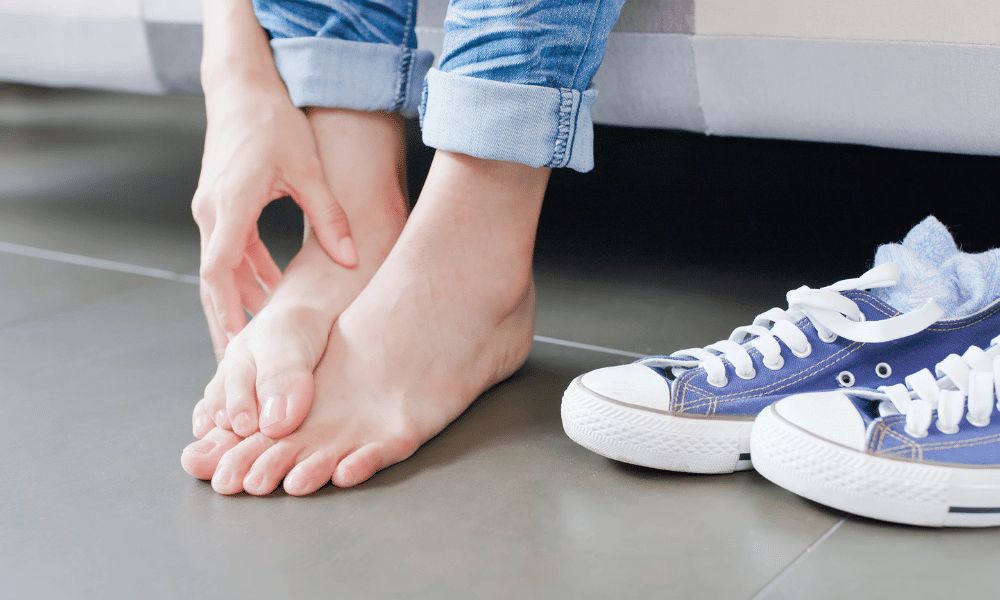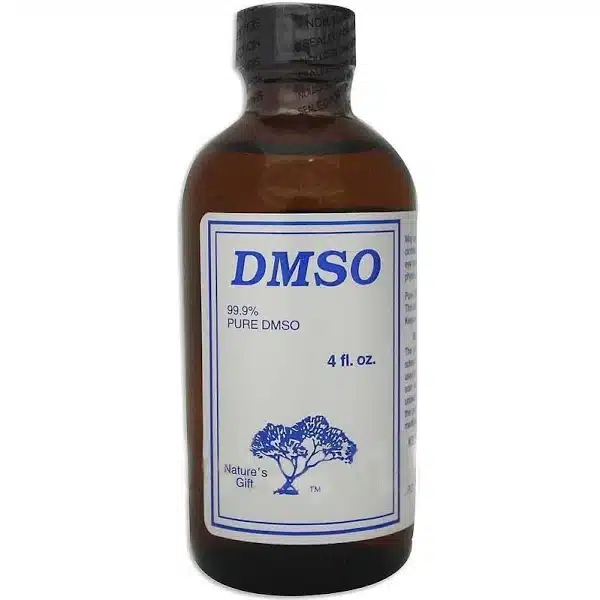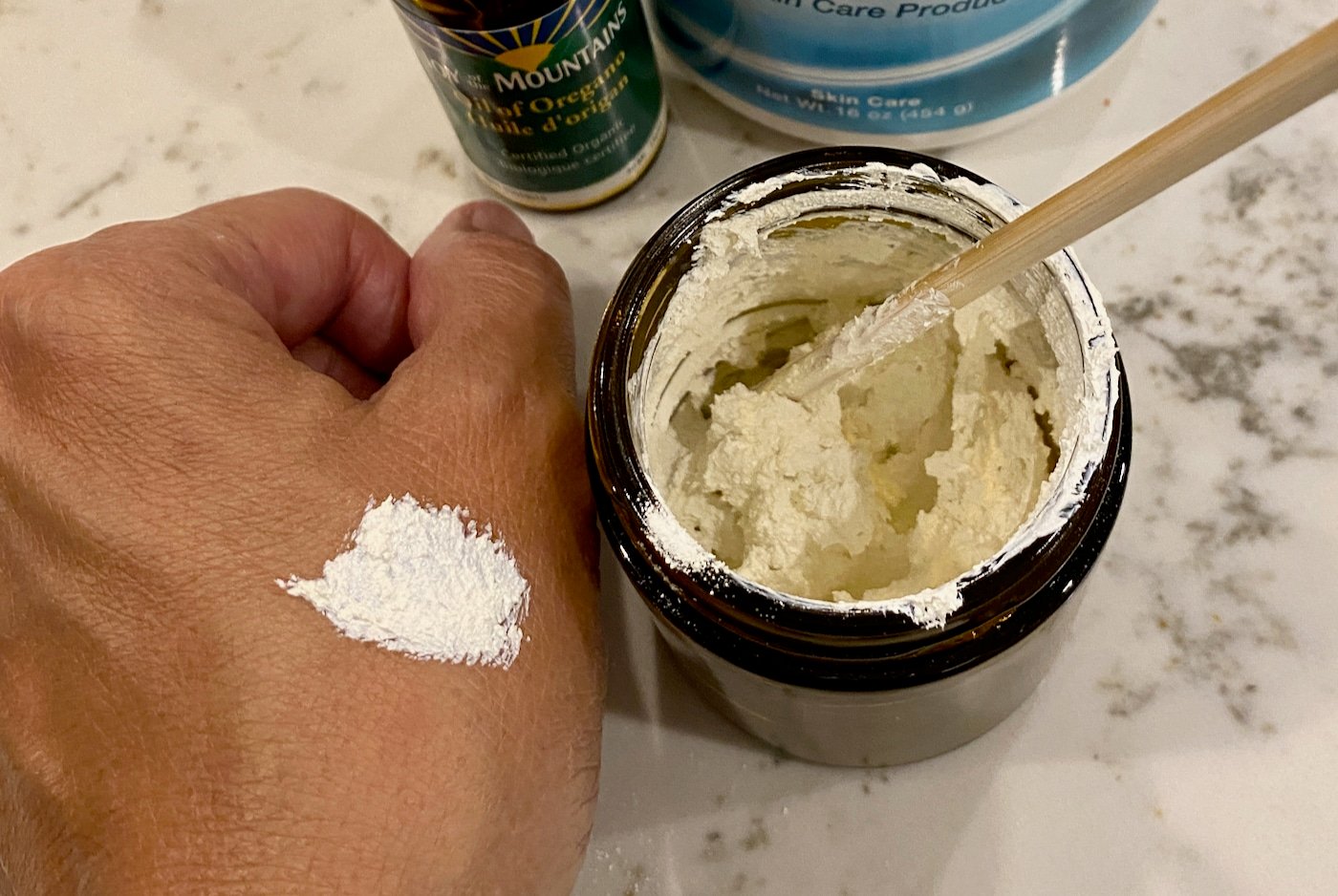What is a Fungal Infection?
Doctors give some fungal infections of the skin the general name “tinea.” Superficial fungal infections are found in the top layers of the skin and mucous membranes, the hair, and the nails. Examples of fungal infections of the skin and other external surfaces include athlete’s foot, jock itch, ringworm, and candida. These can affect the hair and nails as well. Deep fungal infections invade deeper layers of the skin and hair follicles and can spread to the blood or internal organs.
Fungi are a unique group of organisms that have some plantlike characteristics. Examples of fungi include mushrooms, mold, and yeast. Fungi differ from plants, however, in two major ways: (1) their cell walls are made of chitin, rather than cellulose, and (2) they lack the ability to make their own food by photosynthesis; thus they grow directly on their food source. This food source can be the human skin.

Some fungi are simple one-celled organisms (often referred to as yeast). Others are relatively complex, exhibiting specialized cell functions. They grow in soil, on living and dead plants and trees, as well as on animals and humans. The reproductive cell, or spore, of a fungus can be spread by direct contact, air, and water.
Risk Factors
Antibiotic Use
Antibiotics are medicines designed to kill harmful bacteria that are causing infection or illness. However, since these drugs also kill off the good bacteria in your body, fungi can then flourish unchecked. That’s why it’s better to use wild oregano oil, rather than a drug antibiotic, since wild oregano oil kills fungi as well as bacteria. Then, of course, you should also take a high dose of probiotics last thing before bed.
Corticosteroid Use
Corticosteroids (like prednisone) are a group of drugs that suppress inflammation. Unfortunately, these drugs also reduce our immune response and improve conditions for fungus growth, bacterial infection, and viral infection.
Medical Conditions
People with diabetes and some cancers, such as leukemia, are more susceptible to fungal and viral infections than the general population.
Fungus Prevention
Yes, I’m going to give you a tried & tested formula to heal fungal infection on the skin or nails, but, knowing how to prevent recurrence is equally important! There are two main approaches to preventing fungal infection. One is to avoid contact with the organism. This can be achieved by not sharing hats, combs, brushes, or other objects, especially when fungus infections are present. Wearing flip-flops or slides in locker rooms, public showers, and around swimming pools can help reduce contact with athlete’s foot fungus.
The other approach is managing the environment to avoid enhancing fungus growth. Reduce moisture and humidity on the skin by drying it thoroughly and by changing sweaty clothes and socks. Cleaning or discarding infected objects and garments also helps prevent recurrences.
In my experience with three competitive athlete children, I will tell you that polyester and synthetic fabrics encourage fungus! So either remove those items asap after usage, or switch to natural fabrics which breathe – like cotton, wool, silk, linen, etc. My sons get their soccer socks off immediately after a game and either go barefoot with slides, or they wear a pair of 80% cotton socks with their slides.
If you’re wearing synthetic shoes all day that don’t breathe, how are your feet supposed to stay healthy? Either switch to leather with cotton or wool socks, or natural socks with slides. Save your sneakers and other synthetic footwear for when you actively need them, then get them off your feet.

Adults can usually handle these preventive measures quite well, but it’s hard to get children to stay aware of, or remember all these restrictions. In addition, how many kids (and adults) do you know who have not taken antibiotics? People that live in a rainforest (like we do up here in the Pacific Northwest) or a humid, tropical environment, are also more prone to fungal infections due to high levels of moisture in the air.
So sometimes, in spite of your best efforts, you or your child (or you) will end up with a fungal infection. My husband got one on his feet from frequently playing soccer in the rain. One year, my eldest son, Oscar, got a fungal infection on his hands – then I discovered that many of the other boys in Oscar’s class had the same infection, as did our neighbour’s child. Then my youngest son Hugo got the same infection. It looked just like “athlete’s foot”, yet on the hands. While it didn’t hurt, the skin just kept peeling and peeling – starting with the fingertips and then spreading all over the hands.
I started off treating these things with wild oregano. But since they were children, they would not sit still to let the wild oregano penetrate for more than 5 minutes or so. I also could only consistently treat them once per day – at bedtime. When Zara was a baby, she had a candida infection in the skin of her neck/shoulder and that resolved very quickly with diluted wild oregano (10:1 dilution, 10 drops organic olive oil to 1 drop wild oregano oil). But as a baby, I had access to her all day long, so I could apply it 3-4 times/day and also prevent her from inadvertently rubbing it off. So, in these cases, with older children, the wild oregano oil on its own wasn’t working too well.
One thing I’ve learned about myself is that when my frustration increases, so does my determination to find a solution! So, all these ‘skin things’ just brought out the mad scientist in me, and I began to experiment. Those of you who have been following my experiments on my blog, know that one of my favorite new substances is DMSO (dimethyl sulfoxide – extracted from tree bark). Not only does DMSO have its own healing abilities, but it binds with water faster and more strongly than water itself. Thus it penetrates deeply into the skin, tissues and cells of the body, almost instantaneously (by binding to water molecules throughout the body – and we know how much of the body is actually water!). And here’s the other key point: it will carry with it whatever substance it is mixed with (unless the molecular weight is too heavy).
Luckily my kids are used to my experiments and were all willing lab rats in Mum’s latest “search for a cure”! Then, once we perfected the formula, we handed it out to their friends, so they could test it too. This resulted in two different formulas – a Kids Formula for kids up to age 6 and the Regular Formula for age 6 to adult.
Some interesting facts about DMSO & Wild Oregano
 DMSO (dimethyl sulfoxide – extracted from tree bark) instantly transports into the cells and bloodstream anything it comes into contact with. So you must make sure to wash your skin with only natural soap and water (don’t apply any creams). Also use only glass or stainless steel to mix, hold or apply DMSO.
DMSO (dimethyl sulfoxide – extracted from tree bark) instantly transports into the cells and bloodstream anything it comes into contact with. So you must make sure to wash your skin with only natural soap and water (don’t apply any creams). Also use only glass or stainless steel to mix, hold or apply DMSO.
- After applying topical DMSO anywhere on the body, you can taste it on the tip of your tongue within 30 seconds – it travels through the bloodstream that fast.
- DMSO binds to free radicals and forms a substance (dimethyl sulfone plus water with the hydroxyl ion) that is readily excreted through urine.
- DMSO substitutes for water, so it pulls substances through cells that ordinarily would not move through them. The DMSO-water bond is 1.3 times stronger than the water-water bond.
- DMSO is readily absorbed via topical (skin) or oral application. However absorption is even better from the GI tract (oral).
(Source: DMSO Nature’s Healer by Dr. Morton Walker)
WARNING: Dimethyl sulfoxide will transport anything it comes in contact with instantly into the cells. So wash your hands with natural soap before handling, and use only unvarnished wood, stainless steel or glass to store or apply. Avoid plastics or anything that contains synthetic chemicals that could be transported into your body. May cause skin irritation. Avoid contact with eyes, skin, clothing. Wash thoroughly after handling. In case of eye contact, immediately flush eyes with water and call a physician.
Do not refrigerate, as liquid DMSO crystallizes at temperatures below 67 degrees fahrenheit. This does not harm the product – just thaw at room temperature.
 Wild oregano oil has strong anti-inflammatory and analgesic properties, which makes it useful for many conditions where pain and inflammation is present. For instance, it is excellent for sore muscles and joints, athletic injuries, as well as open wounds and burns. For those conditions where pain and inflammation are symptoms of infection (ie. toothaches), oil of oregano is the perfect treatment – it aggressively fights invading pathogens, while relieving discomfort. Many people are surprised at its ability to reduce or stop the pain of severe tissue damage. However, veterans of oregano oil argue that it is “the closest thing to morphine in nature”.*
Wild oregano oil has strong anti-inflammatory and analgesic properties, which makes it useful for many conditions where pain and inflammation is present. For instance, it is excellent for sore muscles and joints, athletic injuries, as well as open wounds and burns. For those conditions where pain and inflammation are symptoms of infection (ie. toothaches), oil of oregano is the perfect treatment – it aggressively fights invading pathogens, while relieving discomfort. Many people are surprised at its ability to reduce or stop the pain of severe tissue damage. However, veterans of oregano oil argue that it is “the closest thing to morphine in nature”.*
To compliment its pain-killing ability, wild oregano oil also has vulnerary properties, so it speeds the healing of wounds and open sores. Needless to say, it is an invaluable item for first-aid kits and a necessity for anyone who spends time in the backcountry. Oil of oregano is an ideal topical rub for muscles and joints for several reasons: 1) As an essential oil, it deeply penetrates tissue and reaches the source of the problem; 2) Its natural anaesthetic compounds reduce pain; 3) Its anti-inflammatory properties combine with antispasmodic actions, to relax and sooth inflamed and spastic tissue; 4) It is also an antirheumatic, which means it eases the stiffness of joints and improves mobility.
Don’t be afraid to experiment
However, if the fungus is in a sensitive area – like under the arm or the face, then even older children may still need to use the weaker formula. For adult mucous membranes (lips, nose, genitals) you can try the kids’ formula and see if you tolerate that first, if not, you can dilute it further with George’s Aloe Vera Juice. Likewise, if you can tolerate more, then try the regular formula.
For Oscar’s (age 9) fungal infection on his hands, we used the kid’s formula (due to the staining issue with zinc) and applied it once per day, at night before bed. Initially, I would brush it all over his hands and crevices of his fingers using a paintbrush, this allowed me to be really thorough and ensure coverage of every millimeter. After his hands showed substantial healing, I would just pour a tiny amount into his palm and he would rub it all over his hands. It was completely healed in 8 days, with no recurrence 6 months later.
For our friend Mark’s (age 5) fungal infection on his hands, they also used the kid’s formula once a day at night before bed, and it was completely healed in 6 days. His mum just dropped a small amount onto his hands and let him rub it in all over. A month later, it looked like it might be coming back a tiny bit on the fingers, so the mum applied it once and it never returned. It has been 5 months now with no recurrence.
I then tested the regular formula on three people with toenail fungus – which is particularly stubborn. For toenail fungus, you need to bandage it up with the formula for 12 hours and then leave it open to the air for 12 hours. The easiest way is to apply it at bedtime with a Q-tip or finger, then either cover with a bandage or old cotton (must be natural fabric) sock. Zinc oxide will stain anything it contacts permanently, hence you need to cover the foot. Then in the morning, remove the bandage, put on your cotton or wool socks, and go about your day. BUT keep in mind the points above for how to allow your foot to breathe and prevent recurrence. Scrape away any dead skin or nail as/when you can, so you are applying the formula to fresh skin (not old dead skin/nail).
FungaHeal Formula
- 1 tsp DMSO 99%*
- 2 tsp wild oregano oil
- Zinc oxide powder to form a sticky paste
In a glass container or 4 oz amber glass jar, mix together the DMSO and wild oregano.
*Note: you do not have to use DMSO if you prefer to avoid it, or don’t have any. I’ve seen this formula work well numerous times with just wild oregano and zinc oxide. Follow the same instructions, just leave out the DMSO.
Then add zinc oxide powder, stirring continually, until a thick sticky paste is formed. I like to use a wooden chopstick to mix, then I can just throw it away when I’m done (zinc oxide is hard to clean). Zinc oxide powder behaves like icing sugar, so add about 1 tablespoon at a time and mix thoroughly before adding the next spoonful. If you happen to add too much zinc, then just add more wild oregano oil – one drop at a time – until you have a consistency that is spreadable, yet thick enough to stick to the skin or nail.
Store mixture in an amber glass bottle (empty wild oregano or Natren probiotic bottle works well) with a lid. Store at room temperature.
Apply to the affected area once per day using a finger, Q-tip, or natural-bristle paintbrush. Remember that zinc oxide will stain white anything it comes to contact with, so cover with sterile gauze or a band-aid to prevent staining. After 12 hours, remove covering (wash area to remove zinc so it doesn’t stain) and leave the area open to the air for the next 12 hours.

FungaHeal paste should have this consistency so it will cover and stick to skin or nails.
For infected toenails (can also be used on warts, plantar’s warts (verruca) etc.) apply topically to the affected area, then use sterile gauze, or a band-aid, or an old cotton sock, to cover the affected area. Leave on overnight. Then during the day, just wear cotton or wool socks and leave your feet open to breathe (barefoot, slides or sandals are better than closed sweaty shoes). You need the balance of having the affected area open to oxygen during the day and then soaking in the solution during the night. OR vice-versa; you can bandage it up during the day and leave it free and open at night.
Note: Zinc oxide is very drying – which is why it works so well with fungus – but if skin becomes too dry/irritated/cracked, then apply a layer of cold-pressed castor oil to soothe and restore balance. If you don’t have castor oil, then you can use comfrey salve instead.
WARNING: For external/topical use only. Do not ingest orally, rectally, or vaginally.
*Always do a “patch test” first on a small area and wait for 15 minutes to test for tolerance before applying. If not tolerated, wash off with soap and water, then apply comfrey salve or aloe vera if needed to soothe.
FungaHeal Kids Formula (for babies, kids to age 6)
- 1 tsp DMSO 99%
- 5 drops wild oregano oil
- 1 tsp tea tree oil
- 1 tsp colloidal silver (minimum 20 ppm)
- 2 tbsp George’s aloe vera juice or water
In a glass container with a pour spout (a glass measuring cup works well), mix together the George’s aloe vera, silver, and DMSO.
Then put wild oregano oil into a 1 tsp measuring spoon, and add tea tree oil until it is full. Stir into formula until well mixed.
Pour mixture into an amber glass bottle (empty wild oregano or Natren probiotic bottle works well). Store at room temperature. Makes 1 oz of formula.
Shake well to mix and apply using a finger or soft, clean paintbrush to affected area 1 – 3x/day.
WARNING: For external/topical use only. Do not ingest orally, rectally, or vaginally.
*Always do a “patch test” first on a small area and wait for 15 minutes to test for tolerance before applying. If not tolerated, wash off with soap and water and then apply comfrey salve or aloe vera if needed to soothe.
FUNGAL INFECTION TREATMENT SUMMARY
- Apply FungaHeal Formula once per day – 12 hours covered with formula, 12 hours open to the air.
- Make sure the affected area is kept dry and open to the air as much as possible ongoing to prevent recurrence.
- Avoid wearing synthetic clothing, socks, footwear – they don’t breathe!
- Experiment as needed with the two formulas depending on age, location, whether staining is an issue, etc.
- Reduce sugar in your diet as much as you can – fungus loves sugar! And supplement with Natren probiotics to create a healthy gut flora.
- Take supplements to bolster your immune and endocrine health, like MultiAbsorb Immune, vitamin D3, and QuikPlus atom-sized ionic minerals.
